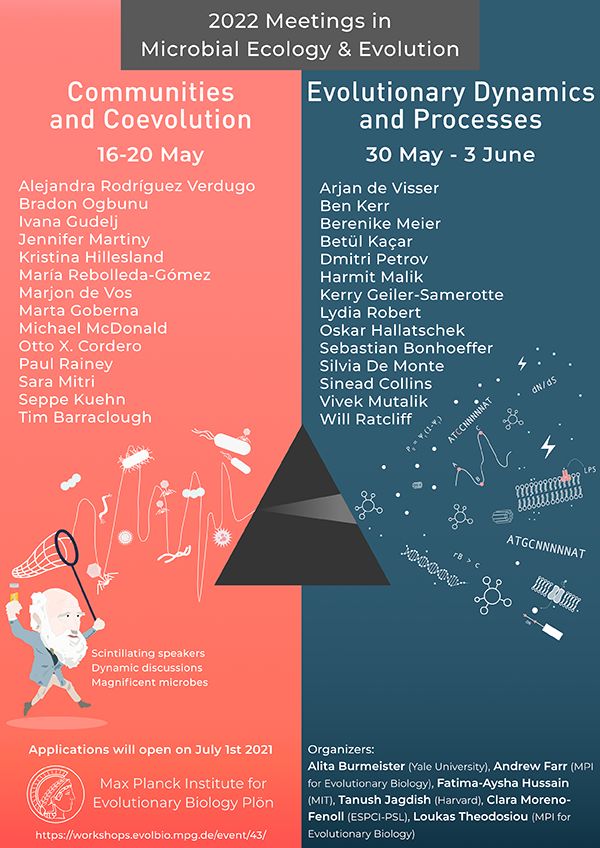Speaker
Description
Microbial communities harbor almost unimaginable complexity at all levels of organization. Vast genomic diversity is present even within a single taxon. Diverse genomes across taxa encode complex regulatory programs that modulate physiological traits from chemotaxis to metabolic processes. From these traits emerge interactions between taxa that depend on abiotic factors. Together, these processes drive eco-evolutionary dynamics across multiple timescales. Which of these many aspects of a community must we understand and why? Are some properties of a community more important than others? Important in what sense? I propose that one path forward is to focus on community function, specifically, the emergent metabolite flows responsible for generating energy and biomass in the collective. From this perspective, I suggest that the important physiological, ecological, or evolutionary processes are those that impact and sustain community function. The problem then becomes decoding how genomic, physiological and ecological complexity gives rise to key metabolite flows in the community. With inspiration from physics, we approach this question by measuring function across diverse ensembles of communities, describing metabolite flows phenomenologically, and learning the salient features of the community and control these flows statistically (iScience, 2022). I present two recent studies employing this philosophy. First, using denitrification as a model process, we show that the dynamic flux of nitrate and nitrite through a community can be predicted simply from knowledge of the genes each strain possesses (Cell, 2022). Second, using communities of algae and bacteria that cycle carbon, we show that the carbon cycling rate depends crucially on the metabolic capabilities of the taxa present (PNAS, 2021). These studies show that simple mappings exist from genes to traits and traits to community function. I propose extending this approach to studying communities in the wild, rationally designing functional consortia, and connecting evolutionary dynamics to community metabolism.

